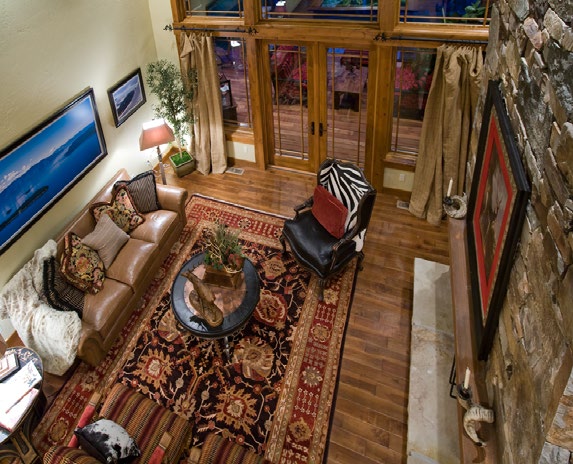
Specifications and Selections
How is your house built, what type of materials, how are those materials installed and what decisions can you make versus the homebuilder are important elements to understand.
Construction Specifications
Construction specifications are the critical components regarding the material used to build your home and how those materials will be installed. With thousands of different materials and installation processes, it is especially important that homeowners have a thorough understanding of their specifications.
Basic specifications should include:
• Exterior wall stud framing
• Best practices are to frame all exterior walls in 2×6 studs that are spaced 16″ apart.
• Many homebuilders are now spacing their wall studs 24″ apart to save lumber. This creates walls that have less wood studs and the walls may appear uneven as the wall studs dry and warp. Certain homebuilders claim that 24″ wall studs provide more insulation (due to less wall studs). That is extreme marketing.
• Floor systems
• Best practice is to specify and build with engineered floor systems. The floor joist is engineered for proper lengths and will not warp and move. With the correct 4×8 TG flooring that is glued and screwed down, squeaks and floor movement is minimized.
• Many homebuilders are using 2×10 floor joist. The problem is that the 2×10 floor joist is conventional lumber and will dry out and twist over time. The reason some homebuilders are going back to 2×10 is a matter of cost. Floor joist cost more than dimensional lumber and new fire codes require fireproof sheetrock to be installed underneath the engineered floor joist which can add several thousands of dollars to the project.
• Siding materials
• Best practice is using a siding material that has industry acceptance and nominal warranty issues. As every home utilizes different materials to provide specific looks, it is difficult to make statements as to what material is good, and what material has issues. For climates that have snow, we do not recommend using a cement type siding as the snow against the siding allows water to migrate into the concrete. Once wet, the concrete siding expands and contracts with freeze/thaw cycles and eventually destroys the material
• Our recommendation is LP Smart Trim. This material has marine grade glue and resist most types of water intrusion which is the main destroyer of siding material.
• Plumbing materials
• There is a variety of plumbing materials for water lines available. Our absolute favorite is PEX piping. Unlike copper and other plastics, PEX is flexible, resistant to scale, does not corrode or develop pinholes. For colder climates, PEX can often withstand freezing temperatures as the material can expand without breaking. Another benefit for PEX is the ability to route all the plumbing to a master manifold which provides the homeowner one location for controlling all the water lines in the house.
Product Selections
The most exciting part of custom homebuilding! Selecting appliances, carpet, tile, lighting, and so many more items for your new home.
There are several noteworthy issues with selections and selections fall into two key categories; items you select and allowances that the homebuilder provides you.
Builder allowed selections
Homebuilders often limit the selections that a homeowner may make. Some homebuilders will only provide a basic list of items to choose from that may consist of colors, window grids, plumbing, appliances, light fixtures, and basic electrical upgrades. Other homebuilders will allow a large variety of selections for a custom home.
Why would a homebuilder limit your selections? First, the homebuilder is liable for all products that go into your home and includes warranty issues and callbacks. The products must be proven for a homebuilder to take that risk. Secondly, the homebuilder must have accounts setup with every vendor providing the selections. This can be a hassle for a busy homebuilder to setup different accounts for their client and can include billing issues as a most homebuilders draw funds for items completed, and then makes payments to the vendors.
Builder Allowances
Certain products are difficult to provide selection options. Items such as carpet, wood flooring, countertops, lighting fixtures and tile have so many variations and product changes that it is exceedingly difficult to provide meaningful selections. These categories are handled by the
homebuilder providing the homeowner an allowance amount that should represent the value of the standard selection. The homeowner will then select the product directly with the vendor, make changes, and finally pay for those changes that are above the allowance amount directly to the vendor.
Conflicts can arise between the allowance amount and the homeowner’s final product selections. While it’s not uncommon for custom homeowner’s to spend more on interior products then their allowance, the allowance amount must be fair and the homeowner must understand what the allowance amount was based on.
Best practices is for the homebuilder to secure a current bid for the product and that amount becomes the allowance amount. For instance, homebuilder receives a bid for the carpet, and it is based on Shaw “moonshadow” carpet. That actual amount and bid goes to the homeowner. This provides a true basis for the allowance and if the homeowner orders a more expensive carpet, they knew what the original amount was based on and conflict is avoided.
By providing a current bid that is based on a specific product clearly identified to the homeowner, the homebuilder would be less inclined to supply a “standard” material that is actually substandard.
Ask for More Information
Sullivan Homes PNW believes the more information our custom homeowners have, the better their decisions will be. Contact us for a video conference call. Any questions and all the answers. We love to talk construction!
Call or text (208) 755-1017
